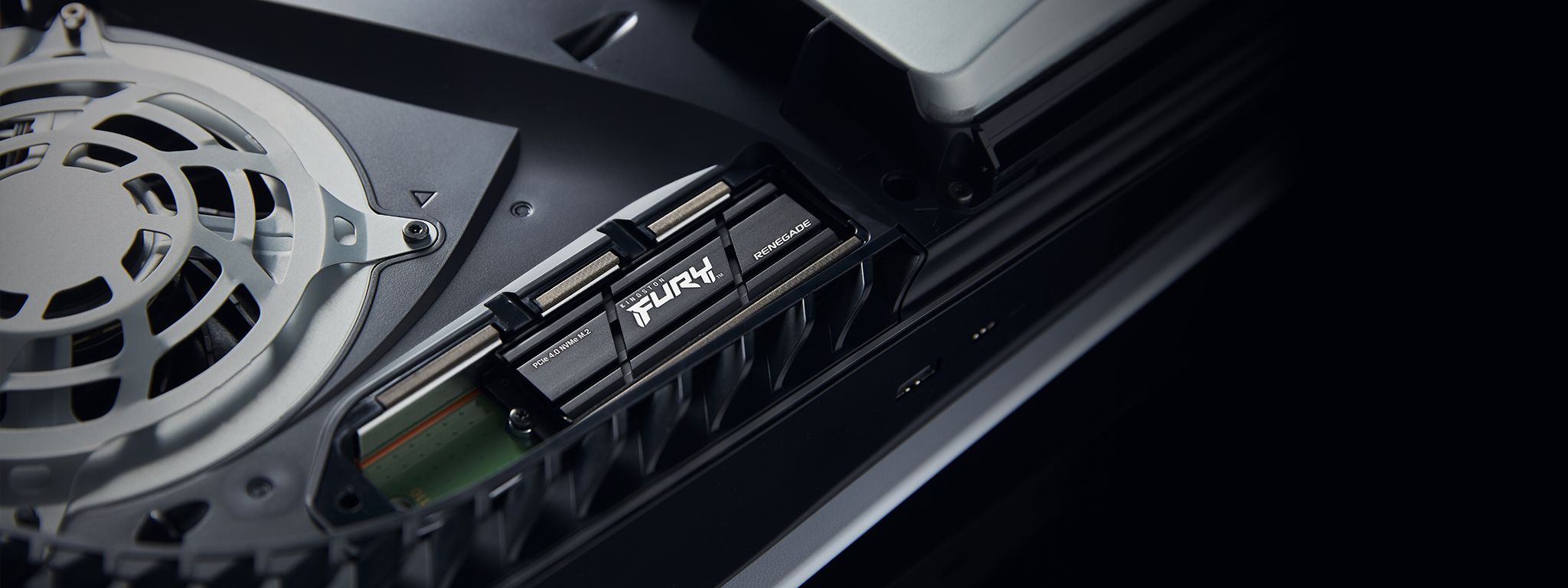
PS5 SSD Upgrade Guide (2025): Best Drives + Easy Setup
The PS5 supports PCIe Gen 4 M.2 NVMe SSDs from 250GB to 8TB, with a heatsink required and tight size limits
Top tested picks: WD Black SN850X, Samsung 990 Pro, SK hynix Platinum P41; solid budget options exist too
8TB is supported; just ensure the heatsink fits Sony’s 11.25 mm thickness limit
Setup takes 10–15 minutes: install, secure, replace covers, then format in the PS5 menu
If a game feels sluggish on the M.2, move it back to internal storage (rare, but possible)
PS5 SSD Requirements at a Glance
Before shopping, match the official specs:
Interface: PCIe Gen4 x4 NVMe (Socket 3, Key M). SATA and PCIe Gen3 won’t work
Capacity: 250GB to 8TB
Form factor: M.2 2230 / 2242 / 2260 / 2280 / 22110
Size with heatsink installed:
- Width: up to 25 mm
- Length: 30/42/60/80/110 mm
- Thickness: up to 11.25 mm (max 8.0 mm above the PCB, 2.45 mm below)
Performance: 5,500 MB/s sequential read or faster is recommended
Cooling: Heatsink or heat-spreader required (single- or double-sided is fine)
Source: Sony’s official guidance on compatible M.2 SSDs includes full dimensions, speed recommendations, and installation cautions. Review it before you buy or install to avoid fit issues Sony PS5 M.2 SSD requirements and install guide.
Best Compatible PS5 SSDs (Tested Picks)
The following models are consistent top performers in recent, PS5-focused testing, with options at multiple capacities and budgets. Pricing fluctuates, so compare across capacities and heatsink versions.
Overall best: WD Black SN850X (1–8TB)
Why it’s great: Top-tier Gen4 performance, wide capacity range (including 8TB), and optional heatsink SKU
Notes: The “SN850P” is essentially an SN850X with PS5 branding and a different heatsink; you can often save by buying an SN850X plus a low-profile PS5-ready heatsink
Fast alternative: Samsung 990 Pro (1–4TB)
Why it’s great: Excellent all-around performance; available in single-sided designs and a heatsink version
Notes: Early firmware issues were resolved; the 4TB SKU is single-sided (helps with fit and thermals)
Great value performer: SK hynix Platinum P41 (1–2TB)
Why it’s great: Consistently fast and efficient; strong real-world gaming performance
Notes: Buy the heatsink version or add a low-profile heatsink that fits Sony’s size limits
High-capacity pick (and 8TB support): WD Black SN850X (4–8TB)
Why it’s great: Reliable performance at larger capacities; one of the few mainstream Gen4 drives offering an 8TB option
Notes: Confirm the heatsink height if you’re not using the vendor’s low-profile model
Budget-friendly options: Acer Predator GM7000, Silicon Power US75, Netac NV7000
Why they’re solid: Competitive Gen4 performance and good value
Notes: Prefer versions with low-profile heatsinks or add your own that meets height limits
Tip on heatsinks:
- The PS5’s slot clearance is tight. If a preinstalled heatsink looks chunky, check thickness specs against Sony’s 11.25 mm limit. If you buy a bare drive, add a purpose-built low-profile heatsink designed for console slots and follow the heatsink maker’s instructions for pad placement and pressure.
Step-by-Step Setup (10–15 minutes)
1 - Prepare and power down
Back up clips/saves to the cloud or USB if you like
Turn off the PS5 completely, unplug power and cables, and let it cool
Touch a grounded metal surface to discharge static
2 - Access the expansion slot
Remove the PS5 cover (method varies slightly by model) to expose the M.2 expansion slot cover
Unscrew the small metal expansion slot cover
Remove the screw and spacer; move the spacer to match your drive’s length (2230/2242/2260/2280/22110)
3 - Install the SSD
If your SSD is bare, install the heatsink per the heatsink’s instructions
Align the SSD’s M-key notch with the slot, insert at a slight angle, then press down so it rests on the spacer
Secure with the screw (ensure the heatsink doesn’t obstruct the screw or slot cover)
Reinstall the expansion slot cover and then the PS5 outer cover
4 - Format and verify
Reconnect power and cables; power on
The PS5 should detect the new SSD and prompt you to format it—follow on-screen instructions
Optional: Move or install games to the M.2 storage and test load times
5 - Manage storage
You can freely move games between internal SSD, the new M.2 SSD, and USB storage
If you experience performance hiccups with a particular title on the M.2 (rare), move it back to internal storage
For model-specific visuals, warnings, and size diagrams, refer to Sony’s official guide Sony PS5 M.2 SSD requirements and install guide.
FAQ and Common Pitfalls
Do I need a heatsink?
Yes. Sony requires effective heat dissipation. Use a drive with a PS5-ready low-profile heatsink, or add a third-party low-profile heatsink that fits within 11.25 mm total thickness.
Will any NVMe drive work?
No. It must be PCIe Gen4 x4 NVMe (Socket 3, Key M). SATA and PCIe Gen3 drives aren’t supported.
Is 8TB really supported?
Yes—PS5 system software supports 250GB–8TB drives, assuming they meet all physical and performance guidelines.
What speed should I target?
Sony recommends 5,500 MB/s sequential read or faster. In testing, top Gen4 drives (e.g., SN850X, 990 Pro) provide consistently excellent results for PS5 games.
What about Samsung 990 Pro firmware issues?
Early concerns were resolved via firmware updates, and it’s now a top-performing PS5 option with a single-sided 4TB SKU that fits well.
Is the WD Black SN850P better than SN850X?
Functionally, it’s an SN850X with a different heatsink and PlayStation branding; you can often save with an SN850X plus a low-profile heatsink.
Conclusion: What to Do Next
Pick a drive that balances capacity and price—2TB and 4TB are sweet spots; consider 8TB if you want a “just install everything” library
Choose a heatsink version or add a low-profile heatsink that meets Sony’s fit limits
Follow the short install-and-format flow; you’ll be playing from your expanded library in minutes
Keep your firmware updated and occasionally check storage health in settings
